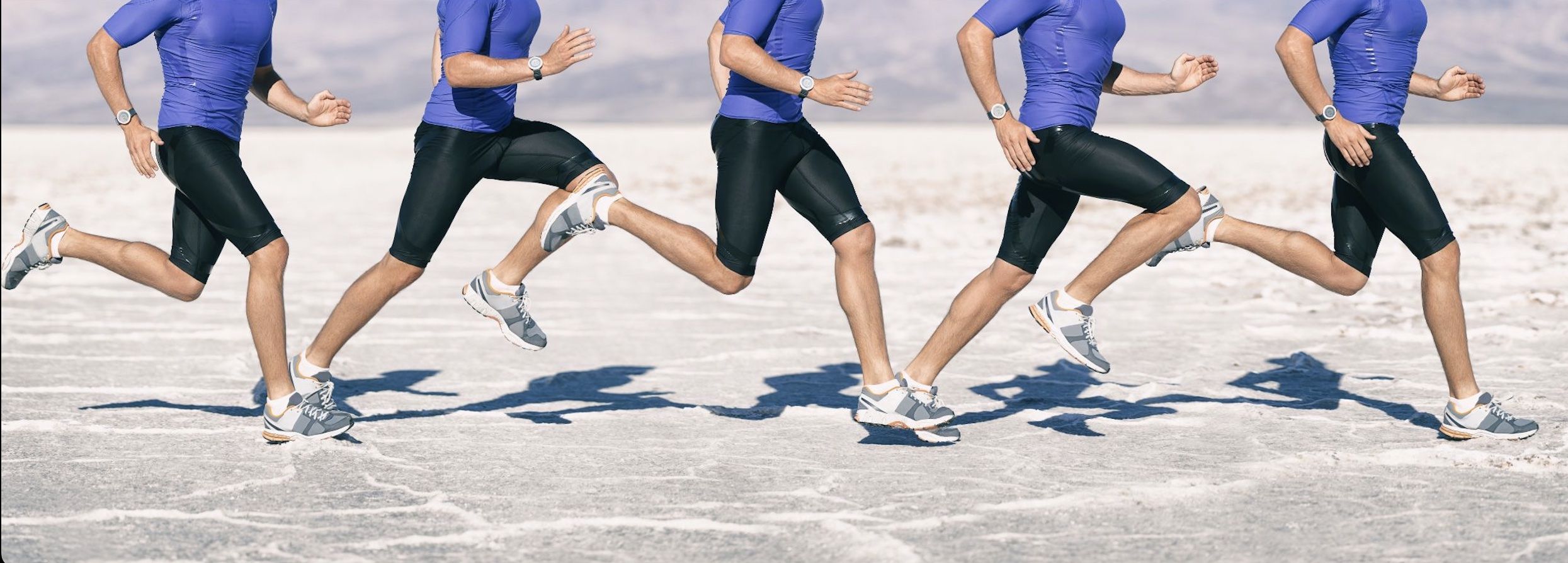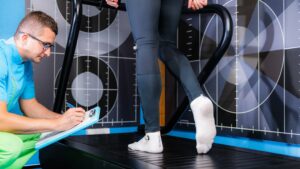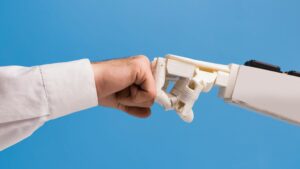Motion Analysis In Sports And Medicine – New Possibilities Through AI Research

Motion analysis takes on new meaning. In the fascinating world of human body understanding and the importance of artificial intelligence, new frontiers of possibility are constantly being explored and expanded. In the process, groundbreaking developments in medical research and technology are revolutionizing the overall understanding of the human body, as artificial intelligence enables doctors and scientists to make more precise diagnoses, drives the development of personalized treatments, and provides access to previously undiscovered insights.
Motion analysis based on AI – In this field of innovation, Sebastian Schröder, as an expert in medical AI research, is on hand with his extensive knowledge and provides comprehensive information on this exciting topic in the following guest article. His findings inspire and allow the reader to experience how artificial intelligence is taking the idea of health and well-being to a whole new level.
Sebastian Schröder is a PhD student at the renowned Center for Tactile Internet (CETI) at Dresden University of Technology, which conducts groundbreaking research in the field of tactile communication. With a focus on human-in-the-loop computing and human motion analysis systems, he is dedicated to exploring innovative technologies.
In addition to his academic career, Sebastian Schröder is also the managing director of Enari GmbH. It is a company that aims to make CETI research results accessible to end users. Sebastian Schröder wants to strengthen the connection between science and practice.
Motion analysis up to now
The recording and assessment of human movements carried out to date has mainly been done in a qualitative way. This means that physicians, therapists or trainers observe the movement patterns and provide feedback based on their experience and the expert knowledge they have acquired over the years. In doing so, they rely on their ability to perceive subtle details and recognize movement patterns.
However, assessing movement quality is challenging because there is often a lack of reliable “ground truth” data from the field. For example, it proves difficult to accurately track and analyze the movements of a tennis player during a match. This is partly because conventional approaches to motion analysis, such as video- and sensor-based motion capture and muscle activation measurements (EMG), can provide important information but do not represent the entire musculoskeletal system in its complexity. Moreover, such measurements are usually performed under controlled laboratory conditions, leading to certain assumptions and bias.
AI enables new tools and alignments
Through innovative systems like those of Enari GmbH, it is now possible to capture the entire chain of action of human movements in the field. These systems provide answers to complex questions such as: “Which combinations of muscle activities lead to specific movements and positions of the associated limbs in three-dimensional space?” They enable comprehensive acquisition and analysis of motion data in real time, making the data models obtained particularly well suited for processing with machine learning models.
This allows individual motion profiles to be created, enabling a more in-depth and precise analysis of movement patterns. These profiles can provide important information for identifying a person’s movement patterns, strengths and weaknesses, and deriving recommendations for improving movement quality. Integrating machine learning into the analysis of movement data also opens up opportunities for personalized training programs and rehabilitation. In addition, individual movement profiles can be used to make targeted adjustments and interventions to minimize injury risks, optimize performance, or achieve specific movement goals.
Possible concrete fields of application
The use of these advanced sensor systems and data models to precisely record and describe movements opens up new application possibilities in various fields. Especially in competitive sports, these technologies can contribute to the development of innovative training methods. Individual movement profiles enable a more targeted analysis of movement patterns and can help athletes optimize their performance and minimize the risk of injury. By integrating machine learning, personalized training programs can be developed that are tailored to the specific needs and goals of each athlete.
New opportunities are also opening up in medical technology. The precise recording and analysis of movement data can be of great benefit in rehabilitation. Therapists can use individual movement profiles to tailor rehabilitation techniques and programs and enable more accurate monitoring of progress. In addition, these technologies can also be used in the development of intelligent prostheses to enable more natural and efficient movement control.
Summary
The combination of Enari systems and machine learning thus represents a promising development in the field of motion analysis. Through a more precise recording and analysis of motion sequences, a better understanding of the human musculoskeletal system can be obtained and more targeted measures to promote health and performance are made possible.

C&C Autor aus Garching/München
Er ist ein Experte für medizinische KI-Forschung und Bewegungsanalyse. Als Doktorand am CETI der TU Dresden erforscht Sebastian Schröder die Anwendung von Technologie in der menschlichen Bewegung. Auch als Geschäftsführer der Enari GmbH arbeitet er daran, Forschungsergebnisse für Endanwender zugänglich zu machen. Seine Bemühungen zielen darauf ab, personalisierte Gesundheitslösungen zu entwickeln und die medizinische KI-Forschung praktisch nutzbar zu machen.


